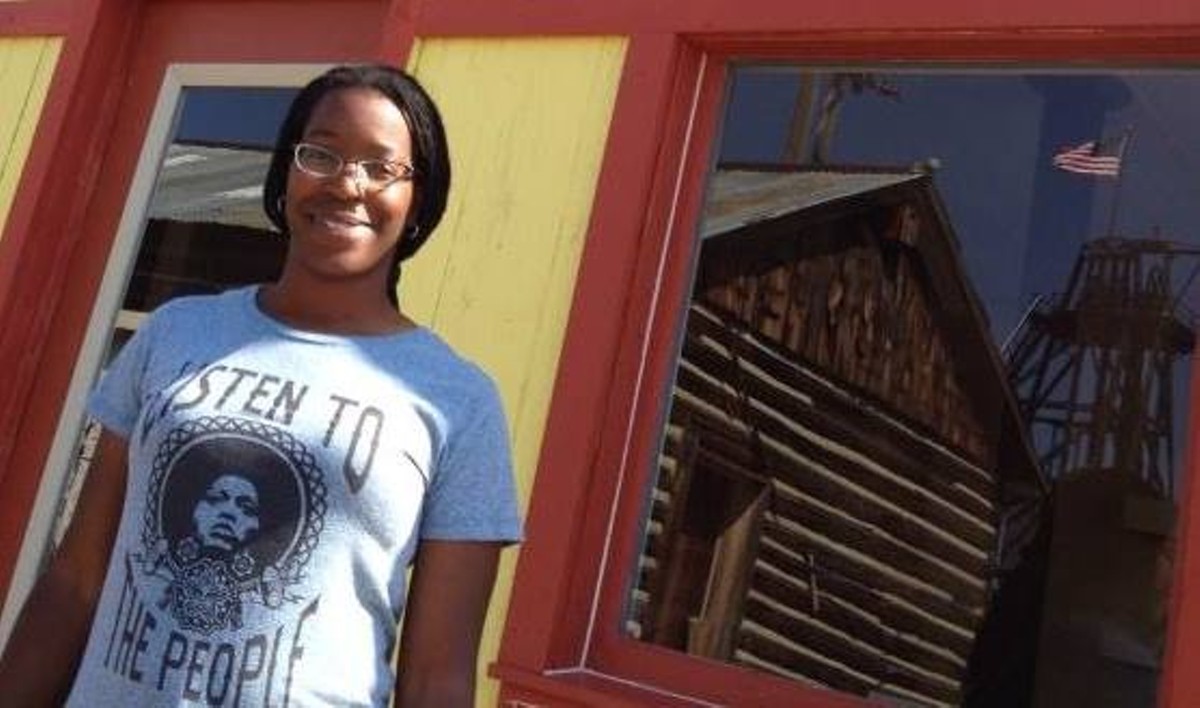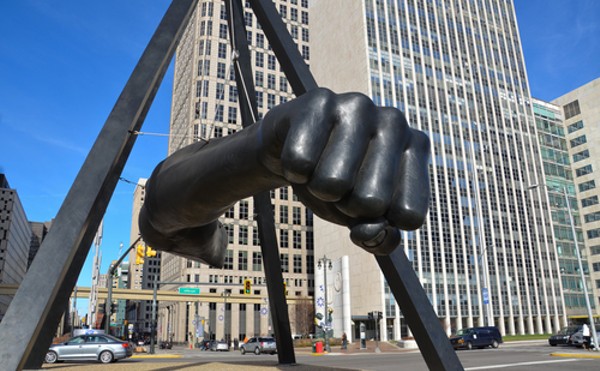It's the dawning of a New Year, and in many ways a new era.
In 2018 we'll see state elections and a new gubernatorial regime. We'll possibly vote to legalize recreational marijuana. Canada is scheduled to legalize nationwide this year. Nationally there will be a grinding battle for control of Congress.
In Detroit we'll start to see if the city government can actually help breathe life into a neighborhood as the Fitz Forward process should actually start showing progress.
But, as we look forward for more revitalization in Detroit, a look back can ground you on what is going on here. Some of that grounding can be found in The Dawn of Detroit, a great book that came out of 2017. Written by University of Michigan history professor Tiya Miles, Dawn examines the century starting with the founding of this frontier outpost on the river. Focused on the lives of the unfree — Native Americans, Africans, and indentured servants — we get a fresh perspective on Detroit's history. Miles seeks to find what their lives were like by peering into the shadows and corners of historical accounts and documents that more often than not noted the unfree only in some sort of financial transaction. The lack of information is exacerbated by the fire of 1805 which burned down most businesses and private homes in the settlement.
Dawn isn't a slave history or a black history. It's American history. It's also about shifting alliances between select groups of Europeans, native tribes, free and enslaved blacks, and racial mixtures of all of them. Miles invites us to envision a land that was neither the United States nor Canada — when Detroit was a settlement on both sides of the river, and still not clearly a part of any nation well after the revolution. As in all really good histories, Miles invites us to think differently about the legends and myths we grew up with.
For instance, Detroit was a key component of the Underground Railroad, a last stop before people escaping slavery could cross the river to freedom in Canada. It is a neat, easily digested story. The question of slavery here in Detroit is never addressed. Nor is the complex idea that enslaved blacks in Canada escaped across the river to freedom in Detroit. Apparently part of the dynamics of the day were lingering animosities from the American Revolution. As boundaries and allegiances began to jell in the years following the revolution, harboring escaped slaves became a way to poke a finger in the eyes of interests across the river.
It's not that slavery did not exist in Canada, but the Canadians, part of the British Empire, felt no compunction to return the property (escaped slaves) of the Americans. And folks on this side of the river chose not to return the escaped property of the Canadians. As Judge Augustus Woodward ruled in an 1807 case:
"There are no reciprocal treaties between Canada and the United States requiring the return of fugitive slaves, and if African-Americans established their freedom in Canada, they could not be returned to slavery upon return to the U.S. and vice versa."
But that was long after Fort Pontchartrain du Detroit was founded in 1701 by Antoine de la Mothe Cadillac as a bit of geopolitical jousting between the French and the English. The frontier outpost's real value turned out to be as a center for fur trading and transport. Europe had grown fond of animal hides, particularly beaver pelts, and the fort's position on the waterways made it a good trading point. Native Americans trapped animals and cured the skins for trade to Europeans, who then used slave labor to carry them out East, or loaded them on ships largely manned by enslaved crewman.
That's one of the points to make you think differently about slavery. We mostly envision it in terms of labor on southern plantations, where scores of people farmed acres of cotton. In Detroit and elsewhere it was more often a situation where there might be two to several held in servitude and ownership passed down for generations within the same family.
In Dawn this is highlighted with the case of Hannah and Peter Denison, an enslaved couple who were held by the Tucker family in what is now Macomb County. William Tucker bequeathed the Denisons (including four children) to his wife Catherine. Hannah and Peter, the document states, were to be freed upon Catherine's death. However, the Denison children were to continue being held by the Tucker children. It was a strange bequeathal that gave one-sixth value of the four children to each of Tuckers six sons. The Tucker daughter had no equity in the Denison children, but would receive two cows instead.
We also learn how Denison became the leader of a local black militia that was largely made up of Canadian slaves enticed to cross the river.
There is plenty more food for thought in Dawn. There is discussion of how native groups were encouraged to live near the fort so that it would be easier to trade with them. Then when competition between tribes led to war, the Europeans sat on their hands — some even welcomed war due to fears of having too many Indians nearby.
And we learn again that the men behind many of Detroit's major street names — Woodward, Campau, Macomb and others — were slaveholders. This was pretty well known, but in Dawn we get a closer look at how these oligarchs gained their wealth and influence.
Don't let that information tie you up in finger pointing and blame. If that is where you end up, then you haven't learned the lessons of Dawn. The real importance of the book is in examining the complexity that exists in things we take for granted. It's in understanding the geography of economic value. It's in seeing the area as a fluid and evolving landscape rather than something that always has been and always will be.
It took a while for me to digest the importance of this book. There were moments while reading that I wanted to get a clearer look into the domestic lives of the people being discussed, the kind of thing that might be in a diary or oral history. But those kinds of accounts don't exist, and Miles' work stands out as a masterpiece of piecing together what can be found and breathing some life into it.
It also breathes life into a piece of American history that has been rendered in a formulaic manner for so long, things that we celebrated as part of the DNA of the town — but, like DNA, incredibly more complex and nuanced than most folks want to contemplate.
Still, it's something you might do on a cold evening shared with a book. The reason that Cadillac chose this location is the same reason why Detroit is enjoying a rebound right now — all that water, and the ability to move goods. We still live and play on both sides of the river even though it's now designated as a national border.
Finally, even as we label eras with economic forces and industries and wars, in the end it's people's lives that we are talking about. Miles renders life wonderfully.
Tiya Miles will give a talk about The Dawn of Detroit from 2 p.m. to 5 p.m. on Saturday, Jan. 27 at the Detroit Public Library Main Branch, 5201 Woodward Ave., Detroit; 313-481-1300; more information available here.







